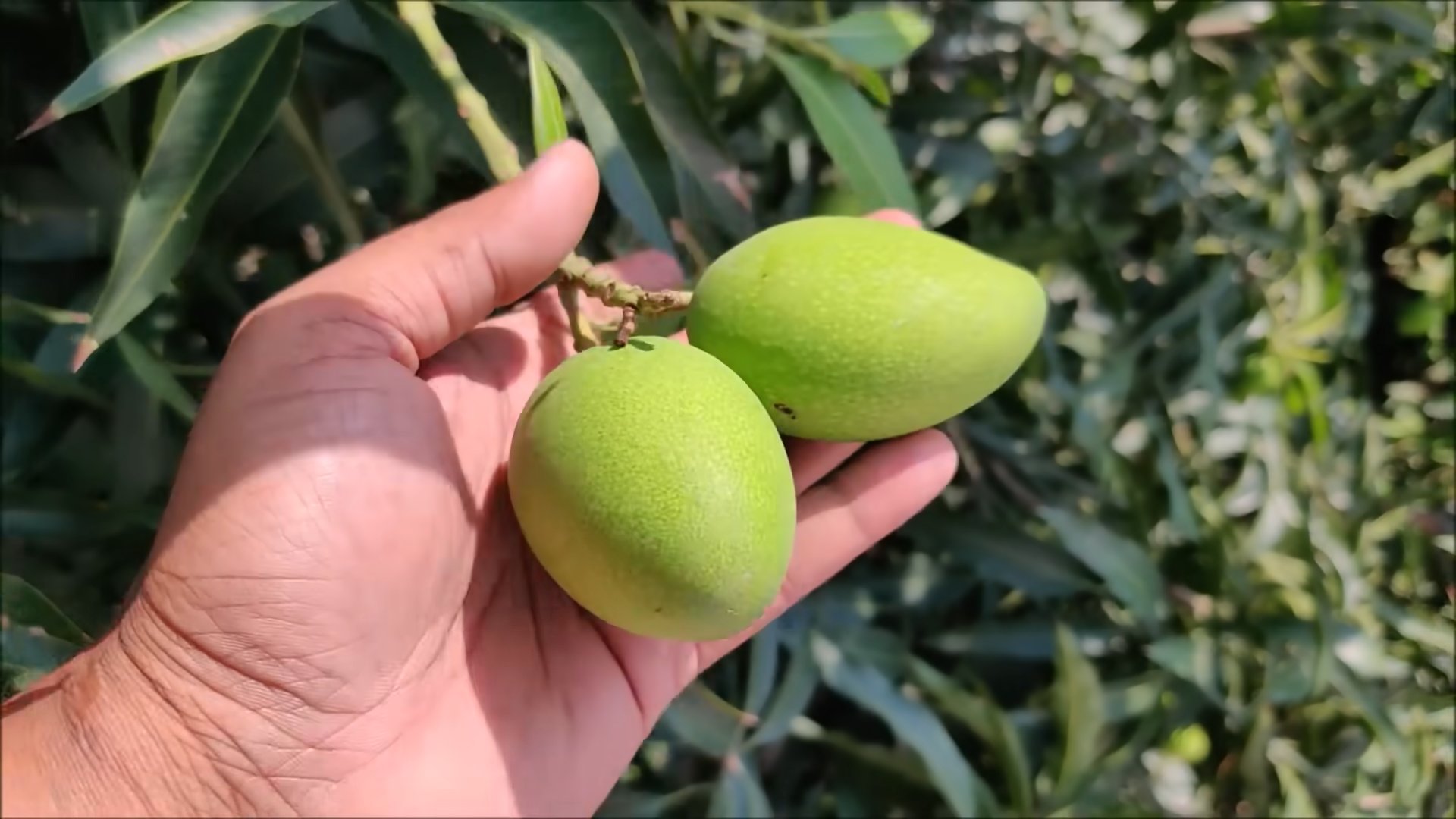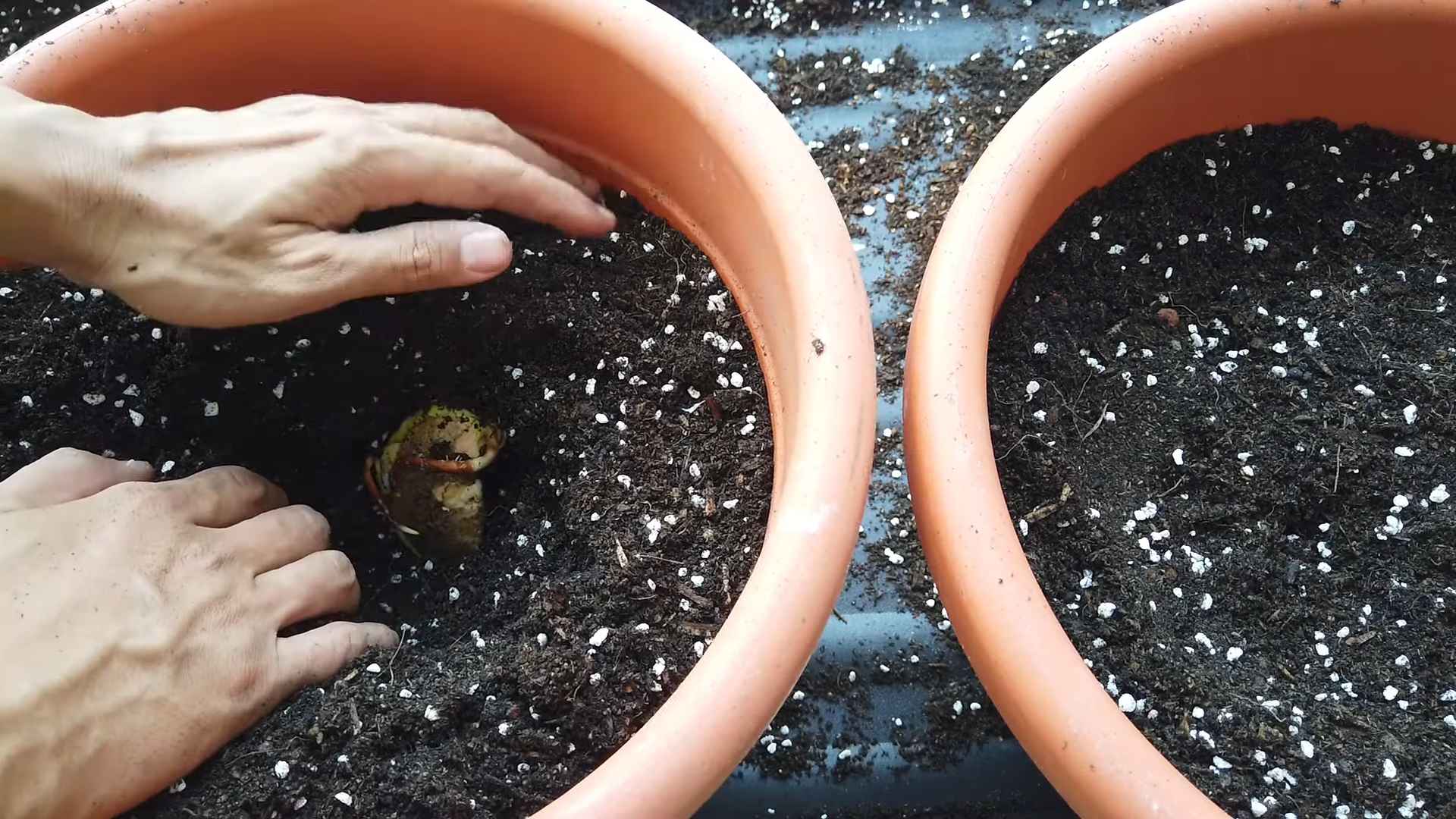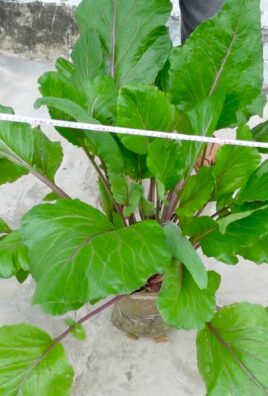Grow Mango Tree from Seed: Imagine biting into a juicy, sun-ripened mango, bursting with tropical flavor, and knowing you grew it yourself! It sounds like a dream, right? Well, it doesn’t have to be! This DIY guide will walk you through the surprisingly simple process of cultivating your very own mango tree from a single seed. Forget expensive nursery saplings; we’re going back to basics!
Mangoes have a rich history, deeply intertwined with cultures across South Asia for thousands of years. Revered for their delicious fruit and symbolic significance, mangoes represent prosperity, love, and even immortality in some traditions. Now, you can bring a piece of that history into your own backyard!
Why should you learn this DIY trick? Because growing your own food is incredibly rewarding! Not only will you save money on store-bought mangoes (which can be pricey!), but you’ll also gain a deeper appreciation for the natural world. Plus, you’ll have the satisfaction of nurturing a plant from seed to fruit-bearing tree. Many people find that gardening is a great stress reliever. I know I do! And who knows, maybe you’ll even inspire your neighbors to grow mango tree from seed too! Let’s get started and unlock the secrets to mango-growing success!

Growing a Mango Tree from Seed: A Gardener’s Guide
Hey there, fellow plant enthusiasts! Ever dreamt of having your own mango tree, laden with juicy, tropical goodness? Well, you’re in luck! Growing a mango tree from seed is totally doable, and I’m here to guide you through the process. It might take a little patience, but the reward of nurturing your own mango tree from a tiny seed is absolutely worth it. Let’s get started!
Choosing the Right Mango and Preparing the Seed
Okay, so the first step is crucial: picking the right mango. Not all mangoes are created equal when it comes to growing from seed. Here’s what I look for:
* Variety Matters: Some mango varieties are polyembryonic, meaning they produce multiple seedlings from a single seed. These are your best bet! Varieties like Tommy Atkins, Haden, and Kent are often monoembryonic (one seedling), which can be less reliable. Research local varieties or ask your local nursery for recommendations on polyembryonic types. In my experience, the smaller, more fibrous mangoes tend to be polyembryonic.
* Ripeness is Key: Choose a mango that’s fully ripe. It should be fragrant, slightly soft to the touch, and have vibrant color. An overripe mango is better than an unripe one.
* Freshness is Paramount: The fresher the mango, the better the chances of germination. Don’t let it sit around for too long after you eat the fruit.
Now, let’s get that seed ready for its new life!
1. Enjoy the Mango! First things first, savor that delicious mango! Separate the flesh from the seed. Try to get as much of the fruit off the husk as possible.
2. Clean the Seed Husk: Rinse the seed husk thoroughly under running water. Use a scrub brush to remove any remaining fruit pulp. This is important to prevent mold and rot.
3. Opening the Husk (Carefully!): This is where things get a little tricky. The seed is inside a tough husk, and we need to get it out without damaging it. There are a couple of ways to do this:
* Knife Method (Be Extra Careful!): Using a sharp knife (like a butter knife or a small paring knife), carefully insert the tip into the edge of the husk. Gently pry it open, working your way around the seam. Be extremely cautious not to cut yourself or damage the seed inside. I usually wear gloves for this step.
* Scissors Method: Some people find it easier to use sturdy scissors. Carefully snip along the edge of the husk, creating an opening. Then, gently pry it open with your fingers.
4. Extract the Seed: Once the husk is open, you’ll find the actual seed inside. It looks like a large, kidney-shaped bean. Carefully remove it.
5. Inspect the Seed: Check the seed for any signs of damage or rot. It should be plump and healthy-looking. Discard any seeds that are discolored or mushy.
6. Optional: Anti-Fungal Treatment: To further prevent fungal issues, you can soak the seed in a diluted fungicide solution for a few minutes. Follow the instructions on the fungicide packaging. I sometimes skip this step, but it can increase your chances of success.
Germinating the Mango Seed
Alright, now for the fun part – getting that seed to sprout! There are a couple of methods you can use:
* Paper Towel Method: This is my preferred method because it allows you to monitor the seed’s progress easily.
* Direct Planting: You can plant the seed directly into a pot, but it’s harder to keep an eye on its germination.
Let’s go through the paper towel method first:
1. Dampen a Paper Towel: Moisten a paper towel with water. It should be damp, not soaking wet.
2. Wrap the Seed: Place the mango seed on the damp paper towel and fold the towel over it, completely covering the seed.
3. Place in a Plastic Bag: Put the wrapped seed in a resealable plastic bag. This will help retain moisture.
4. Warm Location: Place the bag in a warm location, like on top of your refrigerator or near a sunny window (but not in direct sunlight). The ideal temperature is around 70-80°F (21-27°C).
5. Check Regularly: Check the seed every few days. Make sure the paper towel stays damp. If it starts to dry out, re-moisten it.
6. Wait for Germination: Be patient! It can take anywhere from 1 to 4 weeks for the seed to germinate. You’ll know it’s working when you see a small root emerging from the seed.
Now, if you prefer direct planting:
1. Prepare a Pot: Fill a small pot (about 6-8 inches in diameter) with well-draining potting mix.
2. Plant the Seed: Plant the mango seed horizontally, with the slightly curved side facing down. Cover it with about an inch of soil.
3. Water Gently: Water the soil gently until it’s moist but not waterlogged.
4. Warm Location: Place the pot in a warm location, similar to the paper towel method.
5. Keep Soil Moist: Keep the soil consistently moist, but not soggy.
6. Wait for Germination: Again, be patient! It can take several weeks for the seedling to emerge.
Planting the Seedling
Once your mango seed has sprouted (either in the paper towel or directly in the pot), it’s time to give it a more permanent home.
1. Prepare a Larger Pot: Choose a larger pot, at least 10-12 inches in diameter. Fill it with a well-draining potting mix that’s rich in organic matter. A mix specifically formulated for fruit trees is ideal.
2. Carefully Transplant: If you germinated the seed in a paper towel, carefully remove the seedling. Be gentle with the roots.
3. Plant the Seedling: Dig a hole in the center of the pot that’s large enough to accommodate the seedling’s roots. Gently place the seedling in the hole and cover the roots with soil.
4. Water Thoroughly: Water the seedling thoroughly after planting.
5. Provide Support (Optional): If the seedling is tall and spindly, you can provide support with a small stake.
Caring for Your Mango Seedling
Now that your mango seedling is planted, it’s time to provide it with the care it needs to thrive.
* Sunlight: Mango trees love sunlight! Place your seedling in a location that receives at least 6-8 hours of direct sunlight per day. A south-facing window is ideal.
* Watering: Water your seedling regularly, especially during the growing season (spring and summer). Allow the soil to dry out slightly between waterings. Avoid overwatering, as this can lead to root rot.
* Fertilizing: Feed your mango seedling with a balanced fertilizer every few months. Follow the instructions on the fertilizer packaging. A fertilizer specifically formulated for fruit trees is a good choice.
* Pruning: Prune your mango seedling to encourage branching and a strong structure. Remove any dead or damaged branches.
* Pest and Disease Control: Keep an eye out for pests and diseases. Common mango pests include aphids, scale, and mealybugs. Treat any infestations promptly with insecticidal soap or neem oil.
* Repotting: As your mango tree grows, you’ll need to repot it into larger containers. Repot it every year or two, or when the roots start to circle the bottom of the pot.
* Patience is Key: Remember that it can take several years for a mango tree grown from seed to produce fruit. Be patient and enjoy the process of watching your tree grow!
Overwintering Your Mango Tree (If You Live in a Cold Climate)
If you live in a climate with cold winters, you’ll need to bring your mango tree indoors during the colder months.
1. Prepare for the Move: Before bringing your tree indoors, inspect it for pests and diseases. Treat any problems before bringing it inside.
2. Acclimatize Gradually: Gradually acclimatize your tree to indoor conditions by bringing it inside for a few hours each day, gradually increasing the time over a week or two.
3. Provide Adequate Light: Place your mango tree in a location that receives plenty of sunlight, such as near a south-facing window. You may also need to supplement with artificial light.
4. Maintain Humidity: Indoor air can be dry, which can be harmful to mango trees. Increase humidity by using a humidifier, placing a tray of water near the tree, or misting the leaves regularly.
5. Water Sparingly: Water your mango tree less frequently

Conclusion
So, there you have it! Growing a mango tree from seed isn’t just a fun project; it’s a rewarding journey that connects you to the natural world and provides the potential for delicious, homegrown fruit in the years to come. While it requires patience and a little bit of effort, the satisfaction of nurturing a tiny seed into a thriving tree is unparalleled. Forget the expensive nursery saplings – this DIY approach allows you to cultivate your own mango tree, perfectly adapted to your local environment, and all from a simple seed.
This method, focusing on careful seed extraction and germination, significantly increases your chances of success compared to simply planting a whole mango pit. The key is to provide the right conditions: warmth, moisture, and plenty of sunlight. Don’t be discouraged if your first attempt isn’t perfect. Gardening is a learning process, and each seed you plant offers a new opportunity to refine your technique.
Consider experimenting with different mango varieties. Each type boasts a unique flavor profile and growth habit. Perhaps you’d like to try a Tommy Atkins for its reliable production, or a Haden for its vibrant color and sweet taste. You could even graft your seedling onto a more established rootstock later on to accelerate fruit production or improve disease resistance. The possibilities are endless!
Beyond the potential for fruit, a mango tree offers beauty and shade to your garden. It’s a living testament to your dedication and a conversation starter for anyone who visits. Imagine the pride you’ll feel when you can finally harvest your own mangoes, knowing that you nurtured them from the very beginning.
We strongly encourage you to give this DIY trick a try. It’s an affordable, engaging, and ultimately fulfilling project that will bring a touch of the tropics to your backyard. And remember, the journey of a thousand miles begins with a single seed. Start your mango growing adventure today!
Once you’ve embarked on your mango-growing journey, we’d love to hear about your experiences. Share your successes, your challenges, and any tips you’ve discovered along the way in the comments below. Let’s create a community of mango enthusiasts, learning and growing together! Your insights could be invaluable to other aspiring mango growers. Let’s all learn how to **grow mango tree from seed** together!
Frequently Asked Questions (FAQ)
1. What type of mango seed is best for growing a tree?
The best type of mango seed to use is one from a mature, ripe mango that you’ve enjoyed eating. Ideally, choose a mango that is locally grown, as it will be better adapted to your climate. Polyembryonic mango varieties (those that produce multiple seedlings from a single seed) are generally preferred because they are more likely to produce a tree that is true to the parent variety. Monoembryonic varieties (producing only one seedling) may not produce fruit that is identical to the parent. Some popular polyembryonic varieties include Kensington Pride, Irwin, and Palmer. However, any fresh mango seed has the potential to germinate, so don’t be afraid to experiment with what’s available to you.
2. How long does it take for a mango seed to germinate?
Germination time can vary depending on factors such as temperature, humidity, and the freshness of the seed. Generally, you can expect to see signs of germination within 1 to 4 weeks. Keeping the seed consistently moist and warm (around 70-80°F or 21-27°C) will help speed up the process. Be patient, and don’t give up if you don’t see results immediately.
3. What kind of soil should I use for my mango seedling?
Mango seedlings thrive in well-draining soil that is rich in organic matter. A good potting mix for mangoes should consist of a blend of peat moss, perlite, and vermiculite. You can also add compost or aged manure to improve the soil’s fertility and drainage. Avoid using heavy clay soils, as they can become waterlogged and suffocate the roots. The pH of the soil should be slightly acidic to neutral (around 6.0 to 7.0).
4. How much sunlight does a mango seedling need?
Mango seedlings need plenty of sunlight to grow and thrive. Aim for at least 6 to 8 hours of direct sunlight per day. If you are growing your seedling indoors, place it near a sunny window or use a grow light to supplement natural light. As the seedling grows, gradually acclimate it to outdoor conditions before transplanting it into the ground.
5. How often should I water my mango seedling?
Water your mango seedling regularly, keeping the soil consistently moist but not waterlogged. The frequency of watering will depend on factors such as the weather, the type of soil, and the size of the pot. Check the soil moisture level regularly by sticking your finger into the soil. If the top inch of soil feels dry, it’s time to water. Avoid overwatering, as this can lead to root rot.
6. When should I transplant my mango seedling into the ground?
The best time to transplant your mango seedling into the ground is during the spring or early summer, after the last frost has passed. Choose a sunny location with well-draining soil. Dig a hole that is twice as wide and as deep as the root ball. Gently remove the seedling from its pot and place it in the hole. Backfill the hole with soil, and water thoroughly.
7. How long does it take for a mango tree to produce fruit?
It can take anywhere from 3 to 8 years for a mango tree grown from seed to produce fruit. Grafted mango trees, on the other hand, can start producing fruit in as little as 2 to 3 years. The time it takes for a mango tree to fruit will also depend on factors such as the variety of mango, the climate, and the growing conditions.
8. What are some common problems that affect mango trees?
Some common problems that affect mango trees include fungal diseases such as anthracnose and powdery mildew, insect pests such as mango hoppers and fruit flies, and nutrient deficiencies. Regularly inspect your tree for signs of pests or diseases, and take appropriate action to control them. Proper watering, fertilization, and pruning can also help prevent problems.
9. Can I grow a mango tree in a pot?
Yes, you can grow a mango tree in a pot, especially if you live in a climate where it’s too cold to grow them outdoors year-round. Choose a large pot with drainage holes, and use a well-draining potting mix. Dwarf mango varieties are best suited for growing in pots. Be sure to provide your potted mango tree with plenty of sunlight, water, and fertilizer. You may need to repot your tree every few years as it grows.
10. What kind of fertilizer should I use for my mango tree?
Use a balanced fertilizer that is specifically formulated for fruit trees. Look for a fertilizer with a ratio of N-P-K (nitrogen, phosphorus, potassium) that is appropriate for mangoes. Follow the instructions on the fertilizer label for application rates and frequency. Fertilize your mango tree regularly during the growing season (spring and summer). You can also supplement with organic fertilizers such as compost or aged manure.





Leave a Comment